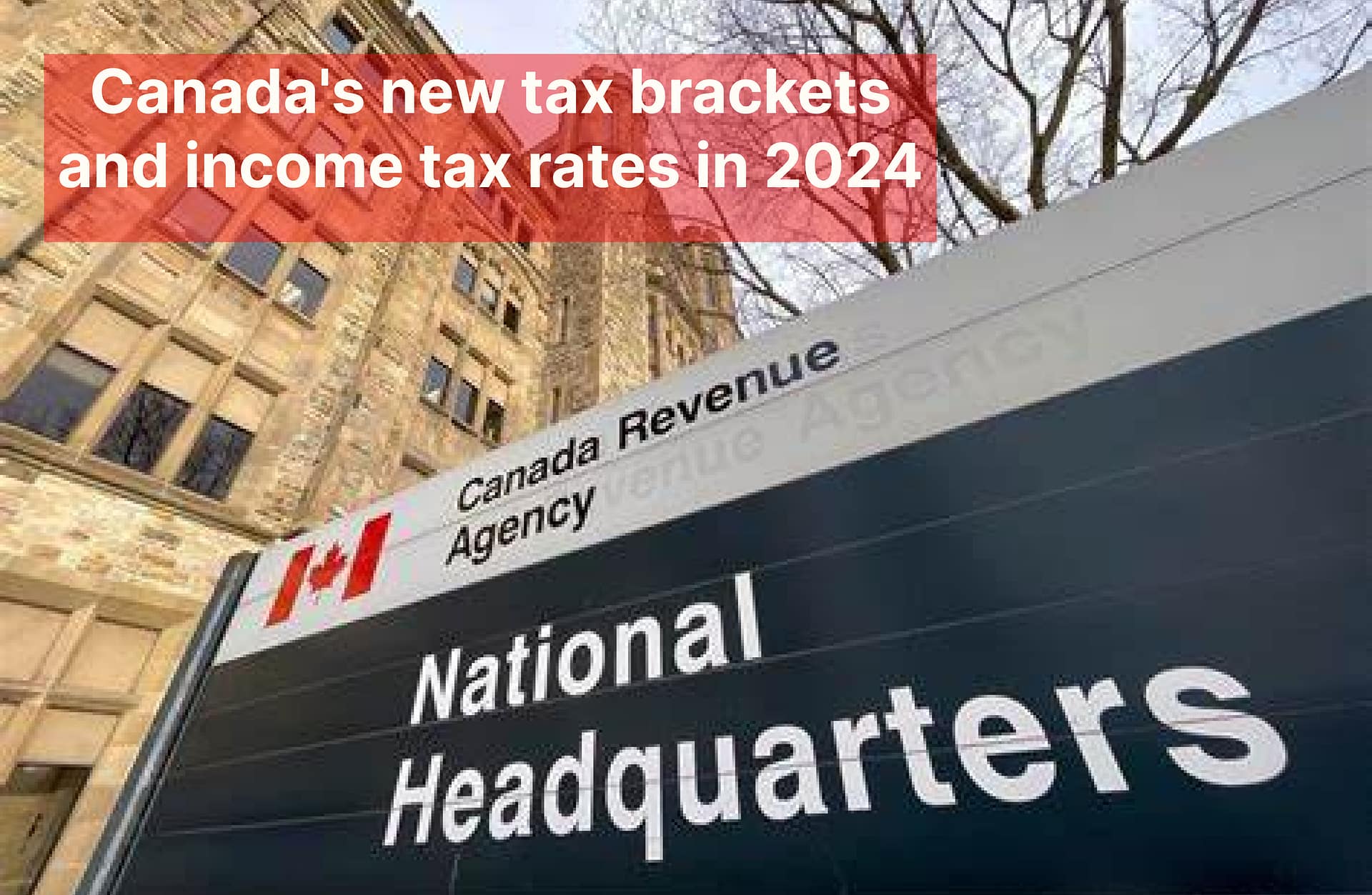Canada’s new tax brackets and income tax rates in 2024: Given the cooling of inflation in 2023, the adjustment to the 2024 tax brackets is relatively modest compared to the previous year,” remarked Ameer Abdulla, a partner at EY Canada, a tax consulting firm in Waterloo, Ontario, in an email to CTVNews.ca.
He continued, “Typically, when an individual’s income remains stable but tax brackets expand, it’s anticipated that their income tax liability will decrease. This outcome is generally perceived favorably by most taxpayers.”
The Canada Revenue Agency (CRA) states that the indexation increase for 2024 is 4.7%, a decrease from the 6.3% observed in 2023, which was the highest increase in several years. In 2021, the increase stood at just one per cent.
According to Abdulla, although tax rates have remained unchanged this year, adjustments have been made to tax brackets.
WHAT IS A TAX BRACKET?
Income taxation operates through a tiered system known as tax brackets, where various income levels are subjected to escalating tax rates, explained Tara Benham, national tax leader at Grant Thornton in Duncan, B.C., in correspondence with CTVNews.ca.
Tax brackets, which are indexed and adjusted annually based on the consumer price index, represent different segments of taxable income subject to increasingly higher tax rates as income rises. Tax rates denote the percentage of income individuals remit to both regional and federal governments.
These rates are applied to taxable incomes, which denote incomes after deductions, credits, and exemptions are factored in. Under Canada’s marginal tax rate system, higher taxable incomes are subject to higher income tax rates.
While the federal government establishes federal income tax rates for individuals, each province and territory sets its own rates, as per the CRA. These provincial and territorial tax rates are levied in addition to federal amounts.
click here – How to open the Zerodha account?types, Features, Benefits,Charges,how to apply
FEDERAL TAX BRACKETS FOR 2024
The bracket thresholds for 2023 tax returns, due by April 30 for all except self-employed individuals, have increased once more this year, adjusted for inflation.
2024 Tax Brackets
Below is the table for the 2024 Tax Brackets, sorted in descending order by the “Tax bracket” column:
| Tax Bracket | Tax Rate |
|---|---|
| Above $246,752.01 | 33.0% |
| $173,205.01 to $246,752 | 29.0% |
| $111,733.01 to $173,205 | 26.0% |
| $55,867.01 to $111,733 | 20.5% |
| $55,867 or less | 15.0% |
Here’s the table for the 2023 Tax Brackets:
| Tax Bracket | Tax Rate |
|---|---|
| $53,359 or less | 15.0% |
| $53,360 to $106,717 | 20.5% |
| $106,718 to $165,430 | 26.0% |
| $165,431 to $235,675 | 29.0% |
| Above $235,675 | 33.0% |
Sharon Perry, an accounting and tax specialist hailing from Coquitlam, B.C., provided an analysis for CTVNews.ca on the disparity.
Let’s consider a scenario of a taxpayer employed by a company earning $60,000 annually in both 2023 and 2024.
In 2023, the initial $53,359 of their $60,000 income would be taxed at 15%, totaling $8,003.85 in tax. The remainder would be taxed at 20.5%, amounting to $1,361.41. Consequently, the total federal tax paid by the employee amounts to $9,365.26.
Comparatively, in 2024, the initial $55,867 would be taxed at 15% ($8,380.05), while the remaining portion would be taxed at 20.5% ($847.26), summing up to $9,227.31.
Sharon Perry elaborated, “The difference between the two years lies in the fact that the taxpayer would pay less tax under the second tax bracket, with a rate of 20.5%, and more under the first tax bracket, with a rate of 15%, because a larger portion of their income falls within the first tax bracket compared to the second tax bracket”.
WHY TAX BRACKETS CHANGE
“The adjustment of federal tax brackets to inflation occurs annually,” explained Benham.
She continued, “As prices rise, tax brackets are adjusted accordingly to reflect changes in the cost of living. Similarly, each province establishes its own provincial tax brackets, with most also indexed to inflation.”
Indexing these brackets usually results in a reduction in the amount of taxes individuals are required to pay and ensures they are not subject to an excessively high tax rate relative to their income.
click here – Best Demat Account In India 2023 : Upstox
BASIC PERSONAL AMOUNT FOR 2024
Canadians have the opportunity to utilize a range of tax credits, deductions, and benefits to lower their overall tax liabilities.
To alleviate their federal income tax obligations, Canadians can utilize a tax credit known as the basic personal amount. Federal income tax rates are only applicable once an individual’s earnings surpass the basic personal amount threshold.
The maximum basic personal amount has increased to $15,705 in 2024, with a cap of $14,156 for individuals earning over $173,205. In the previous year, it stood at $15,000, with a cap of $13,521 for individuals earning over $165,430.
click here – Top 5 Best Credit Card Manager Apps in Canada 2024

